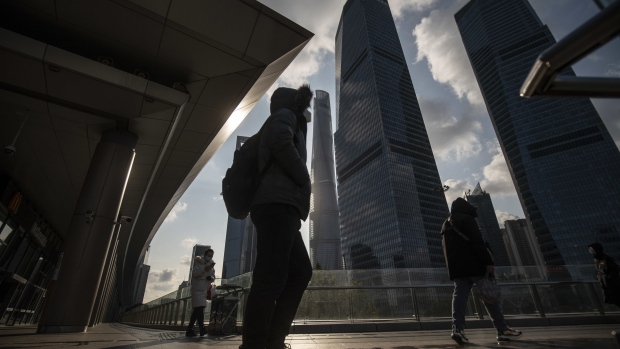Jan 30, 2023
China 2022 Budget Deficit Widens to Record 8.96 Trillion Yuan
, Bloomberg News

(Bloomberg) -- China’s budget deficit jumped to a record $1.3 trillion last year, showing the strain put on local government finances by the spending needed to implement and offset the ultimately futile Covid Zero policy.
The overall deficit of 8.96 trillion yuan puts local governments in an increasingly poor fiscal position and could make the central government reluctant to support the economy with fiscal spending after last year’s slump in growth. The deficit was larger than the previous record of 8.72 trillion yuan in 2020, when the economy was battered by the initial Covid outbreak, and was 51% higher than in 2021, according to Bloomberg calculations based on Ministry of Finance data.
The Chinese government’s finances deteriorated sharply last year as economic growth slowed to the second-weakest since the 1970s, dragged down by a property slump, weakening global demand and the Covid Zero policy, which severely damaged economic activity. Local administrations were forced to pay hundreds of billions of yuan for the testing, quarantines and lockdowns used to enforce that policy, with those costs rising through the year until the government abandoned all control measures in an abrupt about-face in early December.
Government spending was the key driver of the 3% economic growth last year, due to a huge infrastructure stimulus that increased investment and spending on services that boosted consumption, even as spending by households fell. The budget deficit was worth 7.4% of China’s nominal gross domestic product, higher than in 2021 but lower than the record 8.6% in 2020.
That meant government debt rose, with the leverage ratio of the official sector expanding to almost half of GDP, according to Bloomberg calculations.
Total government spending from the general public and government fund budgets was 37.1 trillion yuan last year, up 3.1% from 2021 after being basically unchanged that year. Spending from the main budgets was up 6.1% while that from the fund budgets fell 2.5%.
Tax revenue fell after the government offered taxes rebates to help businesses survive, with the Ministry of Finance calling the returns “the biggest ever.” General public revenue alone, which captures tax income, was up 0.6% on year, but it would have risen 9.1% had it not been for tax rebates, according to MOF. Total income from the general public and government fund budgets was 28.2 trillion yuan in 2022, down 6.3% from a year earlier.
Local Governments Struggle
The worsening slump in the property market slashed government income from the sale of land, which fell to just 6.69 trillion yuan last year, the lowest annual take since 2018. In December, land sales revenue fell 19% on year to 1.57 trillion yuan, extending double-digit drops that were seen in almost every month last year.
Once the cost of selling the land was subtracted, local governments only made 312 billion yuan from the sales last year, two-thirds less than in 2021. Revenue from deed taxes slid 22% from 2021.
The cost of the Covid controls for China’s cities and provinces is becoming clearer as they start to publish their budget figures, with Guangdong spending more than 71 billion yuan in the fight in 2022, nearly the same amount as the 76 billion yuan it spent in the previous two years combined and equivalent to over 5% of the province’s general public income in 2022.
The Beijing government said it spent almost 30 billion yuan last year for Covid vaccines, testing, quarantines and other related spending, equal to more than 5% of the city’s annual general public revenue. The city’s budget deficit blew out by 55% last year to 144 billion yuan, while the deficit of Shanghai, which underwent a wrenching two-month lockdown in the spring, was 171% larger in 2022 than in 2021.
In Fujian, where the outbreaks were less severe, authorities spent 13 billion yuan on various Covid-related measures.
The fiscal squeeze may continue this year as the real estate sector is yet to show any signs of bottoming out, while there is a wall of local bonds maturing. That is set to constrain the authorities’ ability to bolster economic growth, which analysts widely expect to mainly rely on a rebound in consumption as government-led infrastructure investment slows.
Note: A positive number for balance means surplus, while a negative figure indicates deficit.
Source: Ministry of Finance
--With assistance from Tom Hancock.
(Updates with spending details from fourth paragraph. An earlier version of this story was corrected to fix the description of 2021’s debt-GDP ratio in the fourth paragraph.)
©2023 Bloomberg L.P.






